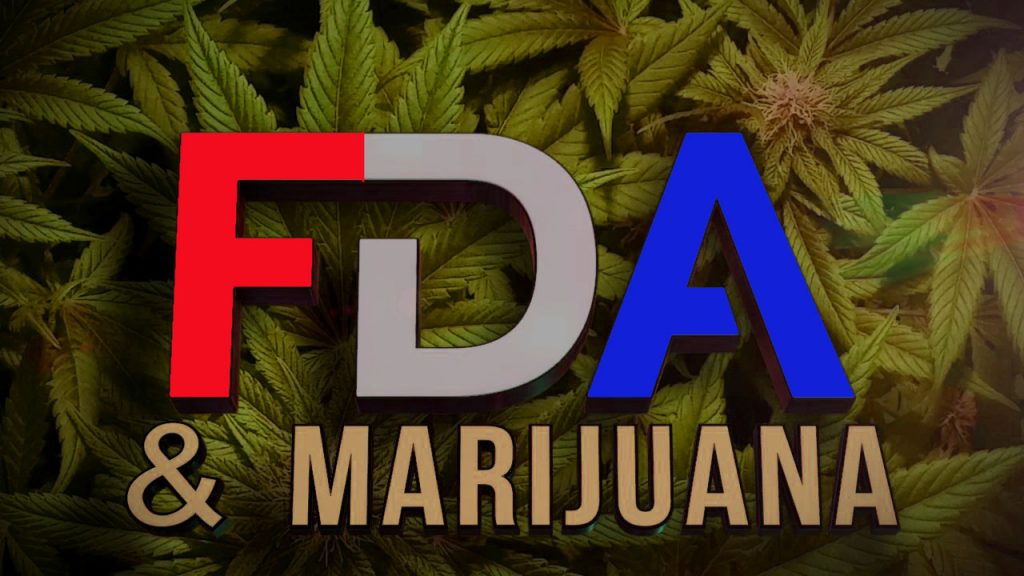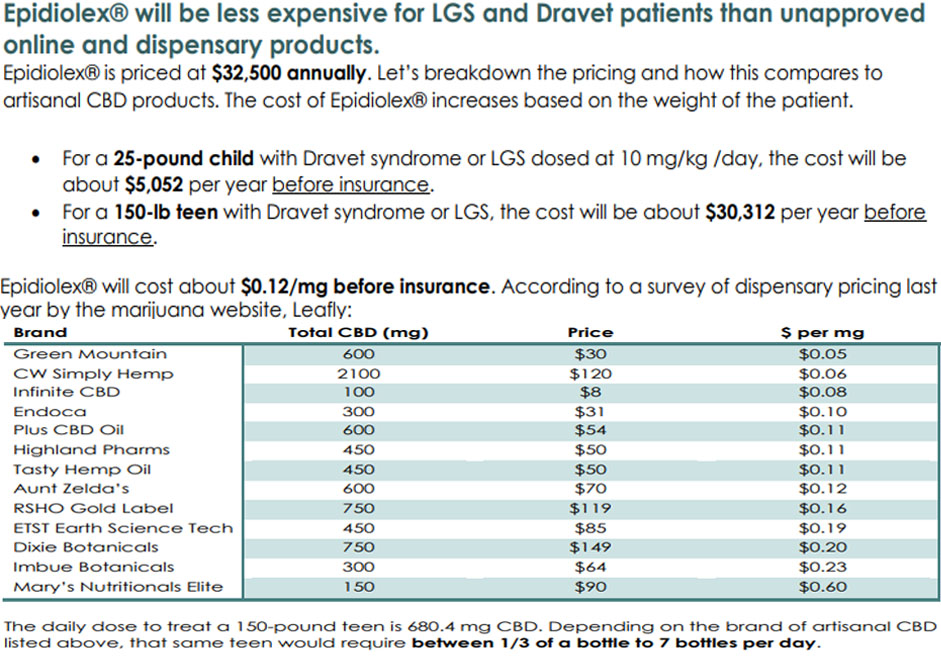Congress held a committee hearing to discuss several proposals involving cannabis, and the FDA was there to be questioned.

An answer given stuck out amongst the vast amount of situations and questions posed to the panel under questioning.
With regards to drug development, FDA continues to believe that the drug approval process represents the best way to ensure that safe and effective new medicines, including medicines derived from cannabis are available for patients. The FDA stands ready to provide information to investigators on the progress and process and specific requirements needed to develop a human drug that is derived from plants such as cannabis.
Dr Douglas Throckmorton – Center for Drug Evaluation and Research
On the surface, you may see it as being something of a safety measure. A procedure followed to ensure the safety of the population. It isn’t just that though. The FDA is hinting at something else.
“the drug approval process represents the best way to ensure that safe and effective new medicines “
They have a procedure and they claim that they want to follow it. Noble way of going about things if the procedure makes sense. Questions are raised from that. Who is involved in the approval process? Who stands to lose money if the plant is approved? Are those people weighing in on this approval process. How do we know that their monetary interest is not outweighing the interest of the population? Can the process even work within our own nation when the law prohibits any research from being done on U.S. soil?

” specific requirements needed to develop a human drug that is derived from plants such as cannabis “
This right here is the kicker of it all. To develop a human drug. What has to be developed? The drug in question was created by the plant and really there is no development of a drug. But it says human drug. This is a nice euphemism by the FDA for “a pill or man-made solution.” We already have a man-made solution for these drugs. We call them extracts. We already see it with THC and CBD isolates.
Follow that with “derived from plants.” Either you made an extract to derive from plants or you have created a synthetic form of the drug. If it is an extract, no need to call it a derivative, it is just an extract. Think of Marinol (synthetic) as a great example of this taking place, followed by Epidiolex (extract).
Is this just a bad concept?
It is not a bad idea to have extracts as needed, such as CBD. Epilepsy patients treated with low THC cannabis benefit the most right now. They would not normally get this from a regular cannabis plant that is bought in the typical dispensaries. Texas is a bit different because our dispensaries offer nothing but low-THC extracts and adjust ratios as needed for patient’s needs.
If a dispensary is capable of that, why is the FDA talking about human drugs derived from a plant? This points to making pills and solutions such as Epidiolex.
So what is the big deal?
Massive amounts of money is to be made from this method. Don’t think so? The average cost of Epidiolex for a patient paying out of pocket for this medication would be $32,500 a year. That is really not a bad deal for someone needing a dosage of extract that contains purely one chemical compared to the rest of the marketplace. That’s actually pretty rare though when you look at how many people are using full-spectrum extracts or full plant use as a form of medicine. The entourage effect keeps most of this extract issue from being needed.

That’s where the monetary difference lies for when one starts getting into the adult needs. Right now the price for a 30ml bottle of Epidiolex could cost you between $394 and $434 in a city such as San Marcos, TX. That is a dosage of 100mg/1ml. The daily dose to treat a 150-pound teen is 680.4 mg CBD and puts the cost at roughly $30,312 a year or $2501/month. A 250 lb man would need 1134 mg. At $0.12/mg that puts the cost of a daily dose at $137.04. Per year that equates to $50,020 dollars. For reference, a Mercedes-Benz GLC 300 4MATIC Coupe costs $50k.
Nobody I can think of off the top of my head that has fled as medical refugees to legal states, are paying that sort of cost for full plant access. Say an average patient uses one to two ounces of full plant matter a month. Even assuming they buy what one may consider top-shelf cannabis with the best of what helps them, they are going to pay $400-800 for that one to two ounces. So that results in a max of $9600 a year. That’s far from $30-$50K a year on an extract.
Why the line, the FDA needs more research?
Plain and simple, this is code. Code for we don’t know what each individual chemical compound in cannabis does, yet. We know what the plant does, but we don’t know which compounds are doing what and how, in each individual. And from there, we don’t know how to put it in a pill for patients. This is apparent when articles are released about new information on the plant is discovered. Things such as discover THCP and noting that the compound can actually bind 30 times more reliably than THC. Or that recently, it was discovered that CB2 receptors increase in damaged and/or ill intestines. Therefore, this indicates that cannabinoid consumption could be useful for those experiencing gastrointestinal disease including diverticulitis.
More research is needed for pharmaceutical companies to learn how to make a synthetic or extract those compounds and put them in a pill or oral solution form. If people are going to replace NSAIDS like IBUprofen with cannabis, this industry does not plan on losing money over it. Replace said drugs with an expensive fix, and make even more money.
It punishes everybody, even those who are not going to use it.
I know by this point, somebody is thinking, “but I have insurance that will cover it.”
You will have to meet your deductible if you are on regular insurance. The cost of the insurance plan and medicine with the average family paying $9,996 for coverage alone, then meeting the deductible, came to a total of just under $18,000 in 2017. That number is only going up since then. From there on you pay copays. Since the insurance company is not fond of losing money, they will increase premiums for health insurance for everyone to recoup the cost.
Even if you are not on an insurance plan like that, it is going to cost everyone.
Say you are on Medicare/Medicaid either as a retiree or as a disabled individual. You will pay your monthly cost and deductible, and for the most part, your premium is not going to go up because of it. Only the yearly inflation adjustment. But now the taxpayer is footing the bill.
This really becomes costly for the taxpayer when looking at the largest group needing cannabis access: veterans.
A veteran on Tricare will pay $33 for a bottle of Epidiolex with a limit of 6 bottles per month. A veteran at the VA cannot get this at the time of this writing unless their doctor does a special request because Epidiolex is not in the formulary.

The VA does prescribe this class of drugs for epilepsy and for other variable mental illnesses. If a veteran gets it approved, they will pay $0 if it is for service-connected disability. That is all going on to the taxpayer if this becomes a viable option.
Well, do we not wanna take care of our veterans?
I am not opposed to taxes being paid to get our wounded veterans the proper medication. But I can see why a company would want to have the federal government require that this plant be used in a method that makes them this kind of money. The public obviously wants its taxes to actually make this program function better. Why would taxpayers want to take a more costly and less efficient route? Why go that way when there is the $9600/year method that aa lot of veterans are willing to pay out of pocket?
So, how do we fix this?
Vote. Register to vote and make sure that candidates that support legalizing cannabis in the primaries are pushed forward. The only way to get your elected officials to vote in the manner you desire is to demonstrate that there are consequences for going along with the FDA narrative. Negative reinforcement is the action. This means that you take something away or remove them from the environment to increase the behavior of elected officials voting for cannabis legalization. Punishment for those that vote against it and refuse to ensure cannabis reform is heard in both chambers, in an attempt to decrease that undesired behavior.
We as voters need to cut the elected official’s time in office short if we are not getting the desired results on this topic. It does not require crossing party lines all the time. This can be achieved in the primaries in most places. There are times that crossing party lines may be needed. But it should be made clear and concise that the reason for doing so was a specific issue such as cannabis legalization. This is how you teach and train any thinking body to change its behavior over time.


